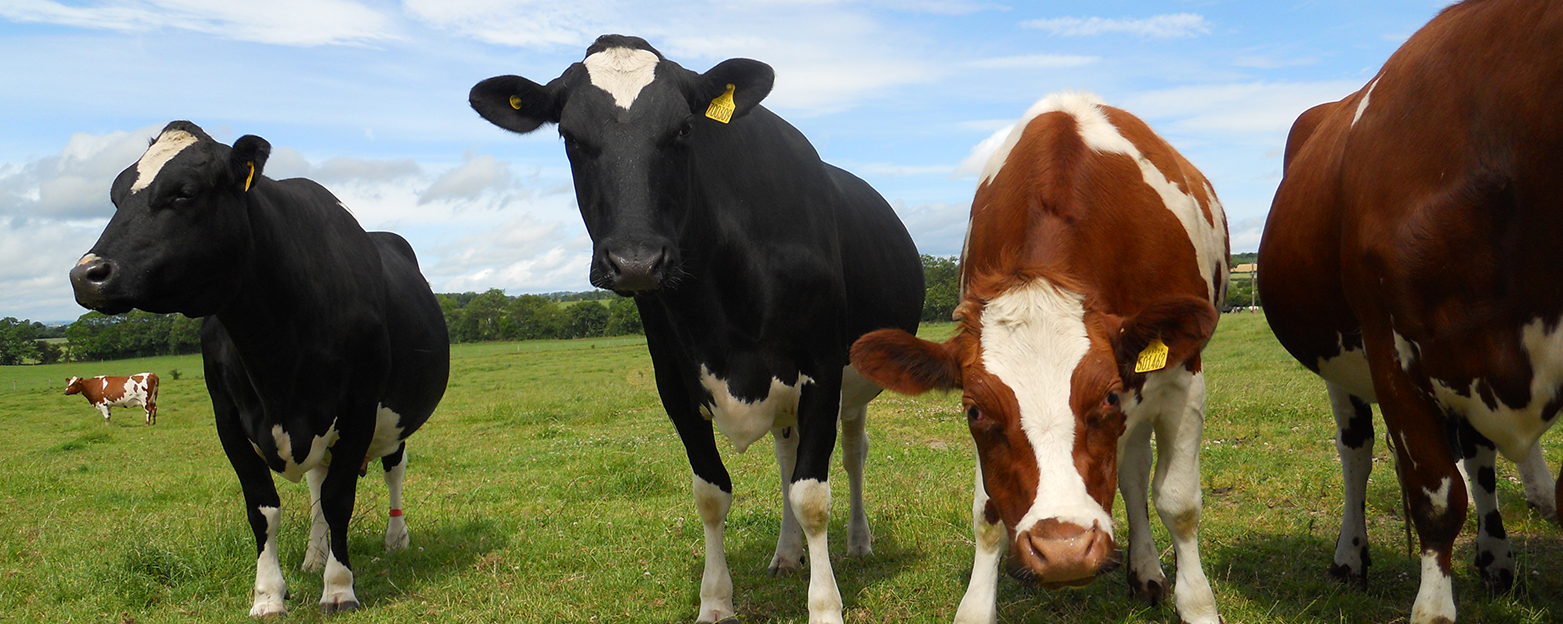The best, organic milk from our cows grazing the Yorkshire & Northumbria Dales
tel: 01325 466999


Another year has flown by and as the temperatures dropped significantly, our farm team began transitioning the cows to indoor life. Whilst we try to keep them out on the pasture for as long as possible, part of the annual cycle includes bringing them in for a few months, when it is cold and there is nothing for them to eat.
Slower grass growth rates in winter mean there isn’t enough forage to sustain the herd through this season: by moving the cows indoors, our team can feed them better by making sure they are enjoying nutritious meals each day. This includes eating the silage and hay that was made during summer when there was plenty of sunshine and energy in the grass.
Not only does this feeding adjustment benefit the cows, but the overall environment keeps them healthy, too. As the fields get wetter, cows are at risk of getting mud and stones stuck between their hooves, which can lead to skin/ foot problems and discomfort.
The moo-ving in process begins in early and mid-October, with the first group to come inside those that were about to calve. We moved this group in first to enable us to see them better during the dark nights and mornings, and the temperatures are also kinder for newborns.
As for the milking cows, we usually allow them to stay out as long as we have grass for them to graze and the field doesn’t become too wet. This year, this group came in during the night in the last week of October and were fully inside day and night by mid-November.
The last group to move in were the dry cows – those that are not milking and are still two weeks away from calving. This year, they stayed outside until the end of November, at which point the fields were becoming too wet for them.
Luckily, at this time of year the cows are usually happy to come in and simply follow our farm team back to the buildings. It’s a familiar environment for them, meaning they feel relaxed when inside, and we keep the area bright with extra roof lights, points of interest, well-ventilated and provide plenty of feed to ensure ultimate comfort.
So, what does a typical day look like when staying indoors?
The day starts bright (or dark in winter) and early with a wake-up call at 4:30am, when the cows head to the parlour for milking, while the sheds are cleaned out and bedded with fresh straw. Shortly after, the cows start to return to the sheds to eat their leftovers from the previous day and a little drink before having a lie down.
After a good rest, they begin to receive their fresh feed for the day from 7am, with milking finishing at 8am. At this same time, the calves are fed and receive fresh bedding and by mid-morning, all cows have been happily fed and bedded up.
Between the hours of 8am and 2pm the team are carrying out routine foot trimming and farm/ machinery maintenance. It is also time for the herd to snooze or roam around the sheds and enjoy the multiple automatic brushes that help scratch and groom out any dead hair, keeping them feeling fresh.
After some well-earned lunch, our farm team are back in action from 2:30pm: with the cows coming back over to the parlour for afternoon milking, the sheds are once again cleaned out and all feed is pushed up. By 3pm, the first cows are milking, and they start making their way back to the sheds with our team washing their feet on the way. An hour later, the calves receive their afternoon feed.
5pm rolls round quicker than you think! At this point, it’s been over 12 hours since the day started. Milking has now finished, the parlour is washed down, with cows fastened back inside the sheds, and again, the feed is pushed up.
Later in the evening, between 8 and 10pm, some of our team members pop back out to check on the herd, making sure everything is in order, and push up feed one final time before it’s lights out and everyone gets a good night’s sleep ahead of another busy day.
Similar to the moving in process, there is no set date for when the cows will start moving back outdoors, but it often falls around mid-March. We have to take into consideration the weather, so as soon as there’s plenty of grass and the fields have dried up enough, we will be looking forward to turnout.
We hope to welcome our customers to experience the spring turnout this year, but in the meantime, stay up to date with all our news and updates on Facebook, Instagram and Twitter, and enjoy 2022’s spring turnout here.
Caroline Bell

Join the descussion